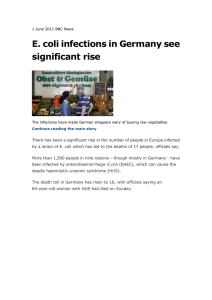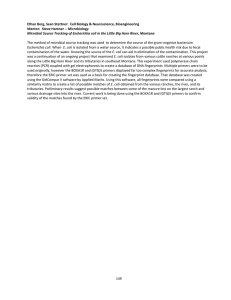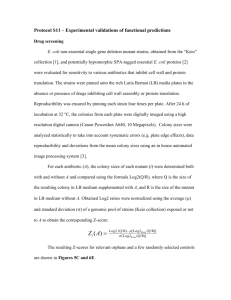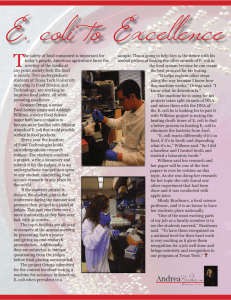Strategies for analysis of a complex E. coli - Neil Burton
advertisement
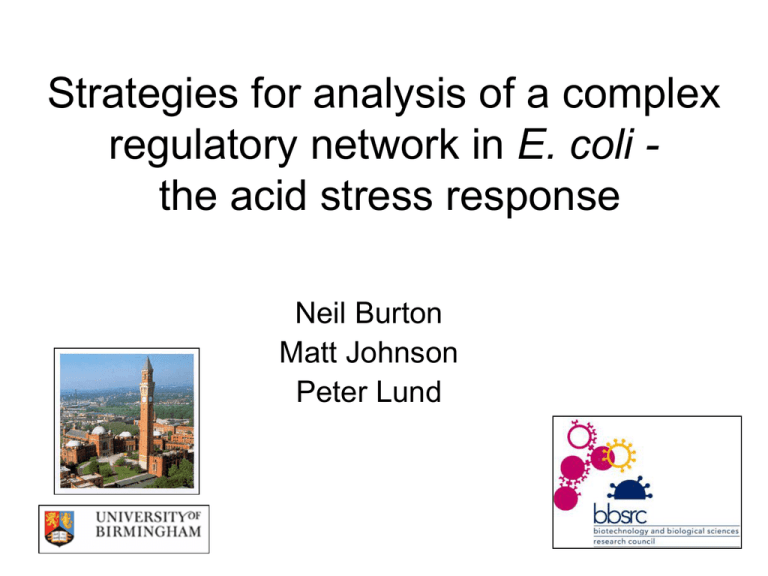
Strategies for analysis of a complex regulatory network in E. coli the acid stress response Neil Burton Matt Johnson Peter Lund My definition of the stress response: adaptive response of an entity to any event which threatens its optimal existence What properties should a well-adapted (or wellengineered) stress response system have? • It has to be able to: – Detect the stress – Convert the detection into a signal – Respond appropriately (i.e., response must ameliorate the stress in some way) – Respond at an appropriate level • This will include ending the response once the stress has ended A good understanding of a network implies: • Understanding of its components • Understanding how the components interact with each other (including dynamically) • Understanding their adaptive value for the entity • Understanding how the network may evolve Technical approaches: • ’omics approaches – how do the different ’omes change during stress? • Analysis of known genes in detail in wt and different mutant backgrounds - esp. time series • Comparisons between related strains that respond differently to same stress • Evolution of novel stress response phenotypes in the lab Acid resistance (AR) and enteric bacteria • Important for passage through stomach (pH 1-3) • E .coli can survive remarkably well in conditions of high acidity (<pH2.5) • Wide range of genes which protect against acid are induced by exposure to mild acid stress (pH 5.7) Mild acid pH 5.7 Aims: • P EvgA EvgS RpoS ydeO • • gadE gadBC Other cytoplasmic and periplasmic components • • Describe and understand the dynamics of the system Identify novel components and their interactions Understand the adaptive value of the network and its components Understand how the network might evolve given new selective constraints Choice of models: – E. coli K-12 MG1655 – E. coli O157:H7 (Sakai) Lux plasmid reporter system Promoter (intergenic region +100-200bp) Stops, RBS P. luminescens LuxCDABE Operon pLUX Light Low copy pSC101 replication • Non-invasive • Automation for high temporal resolution Questions • Does this system give us usable data? • Can it be used to explore different mutant backgrounds/different strains? • Can we uncover novel aspects of the network using this approach? General messages • Promoter probes using lux/gfp provide reproducible, high density time-series data, suitable for model fitting • They can be used to identify potential new links in regulatory networks • However, the outputs don’t necessarily map directly onto transcriptional outputs • Lab-based evolution and whole genome resequencing has great potential for understanding the nature and evolution of stress response systems (and other networks) at the whole organism level Matt Neil UoB: Nick Loman George Weinstock, Washington Uni Dov Stekel NIH


